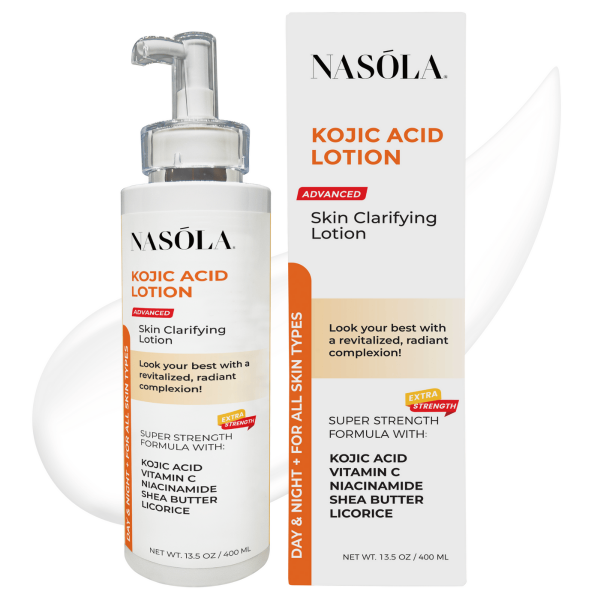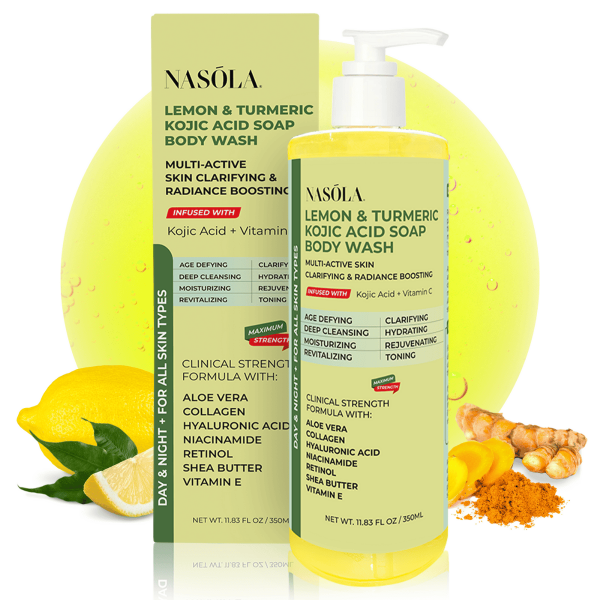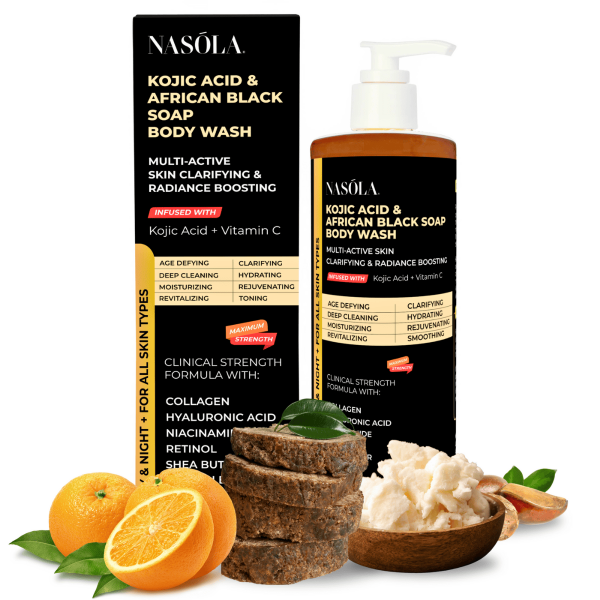Shea butter has strutted its way into skincare routines like it’s the Beyoncé of natural moisturizers—and honestly? It deserves the spotlight.
But the million-dollar question often whispered in skincare circles is this: is shea butter non comedogenic? And for the acne-prone crew, this isn’t just curiosity—it’s survival.
Because no one wants their “natural” glow-up to turn into a pore-clogging backfire.
This post isn’t fluff. We’re pulling the curtains on shea’s role in acne, scars, and dark spots.
Plus, I’ll show you how to level up your routine with certified game changers like Nasola Kojic Acid Lotion, Lemon Turmeric Kojic Soap, and the purifying Kojic Acid African Black Soap Body Wash.
Ready to trade your doubts for confidence and your scars for clarity?
Let’s go deeper.
- Is Shea Butter Non Comedogenic? Understanding Its Role in Skincare
- Shea Butter for Acne Scars: Can It Really Help?
- Does Shea Butter Help with Dark Spots? Insights You Need
- Scented Shea Butter: Does Fragrance Affect Your Skin Health?
- Kojic Acid: The Must-Have Ingredient for Skin Brightening
- Shea It Forward: How to Layer Like a Pro
- Conclusion
- Frequently Asked Questions
Is Shea Butter Non Comedogenic? Understanding Its Role in Skincare
When it comes to skincare, especially for those of us who’ve battled breakouts, the term “non-comedogenic” becomes gospel.
So you’ve got to ask—is shea butter non comedogenic enough to be slathered on acne-prone skin daily?
That’s the first puzzle piece. Whether you’re a believer in natural moisturizers or just testing the oil-free waters, knowing how shea behaves in your pores is non-negotiable.
Truth is, it’s not that simple… but it’s also not that complicated.
Let’s unpack it logically (and with a dab of sass):
What Does “Non-Comedogenic” Mean?
Non-comedogenic simply means a product is designed not to block your pores. For anyone dealing with acne, clogged pores equal more pimples, more redness, more frustration.
In a world bursting with options (and let’s be honest—wasted dollars), finding a product your skin won’t freak out over is GOLD.
Non-comedogenic products give your skin hydration minus the chaos. They’re oil-free or contain oils that don’t overstimulate your sebaceous glands—which means less clogging, more glow-up.
Here’s why it matters:
- Acne-prone skin is hypersensitive to ingredients that block oil flow.
- Pore blockers like coconut oil can even worsen blackheads.
- Non-comedogenic products let skin breathe while doing their job.
- It offers a foundation you can build your routine on with confidence.
So when you hear “is shea butter non comedogenic,” you’re really asking: Will this make me break out or nourish me?
And you’re not wrong to wonder.
The Comedogenic Rating of Shea Butter
On the comedogenic scale of 0 to 5, shea butter ranks between 0 and 2. That’s incredibly mild. Which means… drumroll… it likely won’t clog your pores, especially if you’re using pure, raw shea butter.
That’s the key. The more refined the butter, the more chance of it being laced with additives that could irritate the skin or trigger breakouts.
What to look for:
- Choose “unrefined” or “raw” on the label.
- It should be ivory or pale yellow in color, never white.
- It should smell nutty—not like baby powder or perfume.
- Melt it between your fingers; pure shea absorbs evenly, not greasy.
Still worried? S
tart by spot testing on an area like the jawline or chin. That small test could save you a week of frustration—or deliver glowing, nourished skin in days.
Shea Butter for Acne Scars: Can It Really Help?
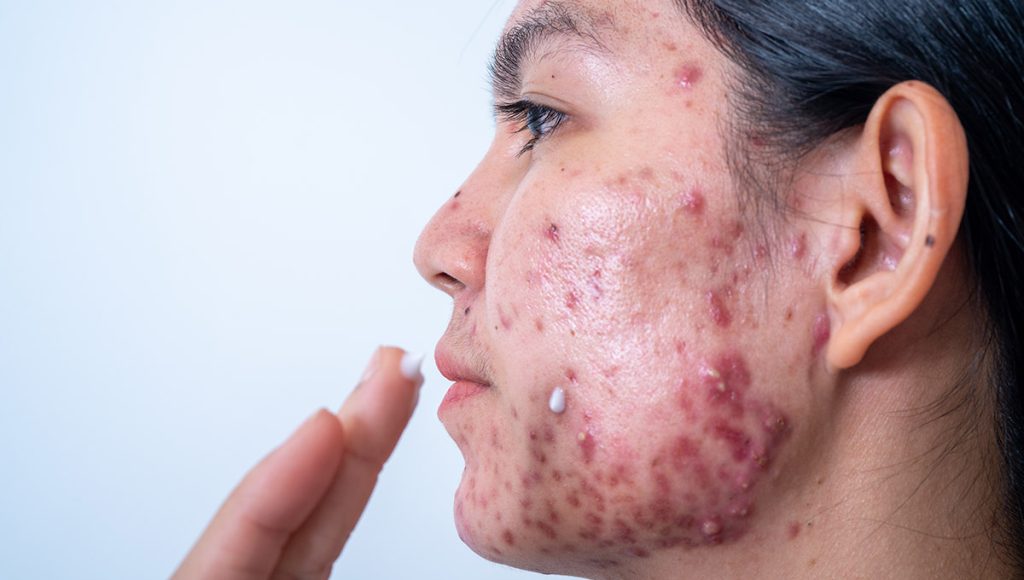
Okay, so we’ve established shea butter is unlikely to cause breakouts… But what about helping with what’s already there?
If you’re staring down stubborn acne scars that just won’t budge, you’re not alone—and here’s exactly where shea earns its superhero cape.
If you often Google “shea butter for acne scars,” it’s likely because you’re hoping for a natural fix that doesn’t sting, burn, or drain your bank account.
Good news—it can be incredibly effective when used with the right partners in crime (we’ll get there).
Healing Properties of Shea Butter
Shea butter is rich in vitamins E and A—two frontrunners in the game of fading discoloration and smoothing skin texture. These nutrients help bring life back to damaged skin cells, making scars look less noticeable over time.
Benefits include:
- Boosts collagen production for better skin elasticity
- Hydrates deeply to plump up pitted scars
- Reduces inflammation that worsens scarring
- Provides a gentle healing layer that protects yet penetrates
Consistent use is key. Think of shea as a long-game healer—it doesn’t bleach or peel; it restores balance. And that’s honestly even better.
Pairing Shea Butter with Targeted Products
Want to supercharge your scar-fading routine? Pair your raw shea butter with the Nasola Kojic Acid Lotion. Here’s why this duo wins:
- Kojic acid brightens uneven tone
- Shea butter heals and seals moisture
- Together, they reduce scars without irritation
- Perfect for sensitive, combo, or dry skin types
Use Nasola Kojic Lotion first to target pigmentation, then seal it all in with shea. You’ll be shocked how fast your post-acne scars calm down.🤯
Does Shea Butter Help with Dark Spots? Insights You Need
Now we arrive at another hot topic: does shea butter help with dark spots? Ohh yes, and here’s where things get even juicier.
Because those stubborn marks across cheeks, jawlines, or shoulders? Shea might not erase them overnight—but it will soften their attitude QUICK.
Dark spots can be caused by sun exposure, acne, hormonal shifts, or aging. Shea butter naturally steps in with a combo of fatty acids and plant steroids to even out tone and reduce discoloration at the source. Let’s break it down.
How Shea Butter Naturally Fades Discoloration
There’s something powerful about an ingredient offering real results without chemicals. Shea butter works because:
- It contains plant sterols like cinnamic acid that disrupt melanin overproduction
- Its anti-inflammatory properties calm redness and blotchy skin
- Antioxidants slow down the oxidative stress causing pigmentation
- It supports healthy skin turnover
All of this means that with daily use, shea butter helps dark spots fade gracefully—no burning, no peeling, no drama.
Product Synergy for Optimal Spot Treatment
If you want to double down, pair your shea butter with Nasola Lemon Turmeric Kojic Soap & Body Wash.
Why? Let’s look:
- Lemon brightens and tones naturally
- Turmeric reduces pigmentation and inflammation
- Kojic acid breaks down melanin for real brightening
- Soap format gently exfoliates while treating
Use this in the shower, then massage shea butter onto clean, damp skin. This glow-up process? It’s not magic—it’s just smart skincare blending.
Scented Shea Butter: Does Fragrance Affect Your Skin Health?
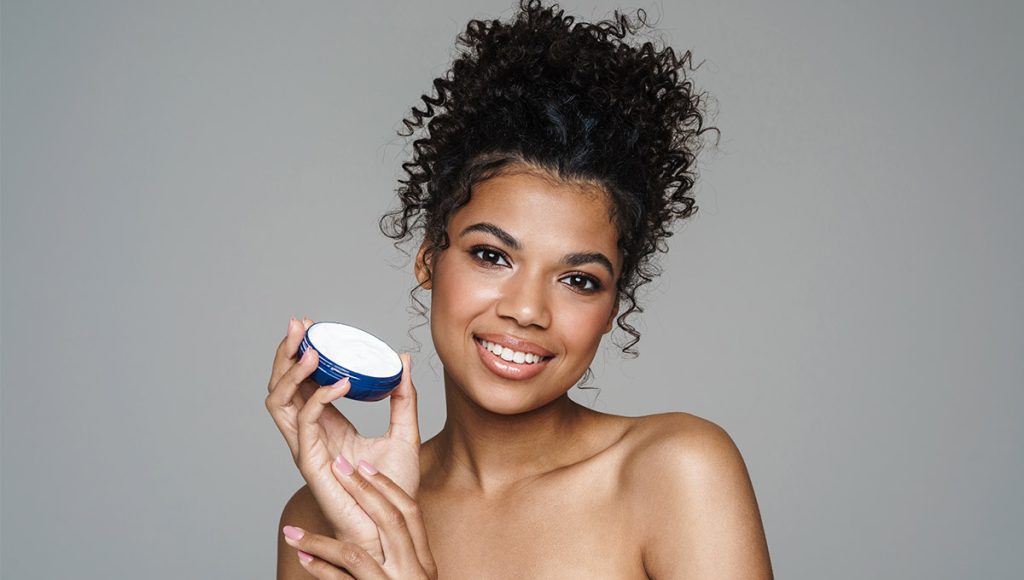
So, you found shea butter infused with lavender or vanilla. Feels luxurious, right? But… is it safe?
When talking about scented shea butter, what smells divine might stir up sensitivity—especially for those of us with reactive or acne-prone skin.
Still, not all scented-butters are junk. Some offer amazing benefits. But you’ve got to know what’s behind the fragrance.
Fragrance vs. Fragrance-Free: What’s Safer?
Sensitive skin types—listen up. Artificial fragrance is often where irritation brews. That sweet artificial rose scent? Might cost you your clear glow.
Here’s what to do instead:
- Choose shea butters scented with essential oils (like lavender, eucalyptus, or chamomile)
- Avoid anything listed as “parfum” or “fragrance” without clarity
- Always patch test scented products before applying to your face
- Go fragrance-free if your skin is red, raw, or healing
Scent-free doesn’t mean boring. It means your skin stays calm—so you can flex that glow the next day without regrets.
When Scented Shea Butter is Good for You
Now, when that scent comes from natural oils, it can actually de-stress your mind AND your skin. Lavender oil, for example, relaxes both senses.
And when paired with a gentle cleanser like **Nasola Kojic Acid African Black Soap Body Wash**—you get:
- Aromatherapy
- Improves mood
- Gentle cleansing without irritation
- Calming antioxidants on skin
Cleanse with Nasola Black Soap, moisturize with naturally-scented shea… That’s called taking care of SELF.
Kojic Acid: The Must-Have Ingredient for Skin Brightening
Let’s spotlight an ingredient with serious street cred: kojic acid. Known for correcting hyperpigmentation, it’s loved by dermatologists and skincare nerds (me 😂). It pairs effortlessly with shea butter—here’s how.
What is Kojic Acid and Why It Works with Shea Butter
Kojic acid is a natural compound derived from fungi. It tackles pigmentation by blocking tyrosine, an amino acid your body uses to make melanin. Which means… it stops dark spots where they start.
Now add shea? You’ve got:
- Brightening + Healing
- Cell repair + Moisture lock
- Natural barrier protection post-acid treatment
- Dual-effect care for sensitive users
Shea butter alone soothes—kojic acid corrects. Together, they transform.
Product Highlight: Nasola Kojic Acid Cream
Layer shea butter over Nasola Kojic Acid Cream and? ✨
- Pigment fades fast
- Skin stays deeply hydrated
- Less irritation compared to straight acids
- Works great for dark knees, underarms, face
Try this combo for a gentler path to glowing, even-toned skin. It’s not about rushing—it’s about working smarter.
Shea It Forward: How to Layer Like a Pro
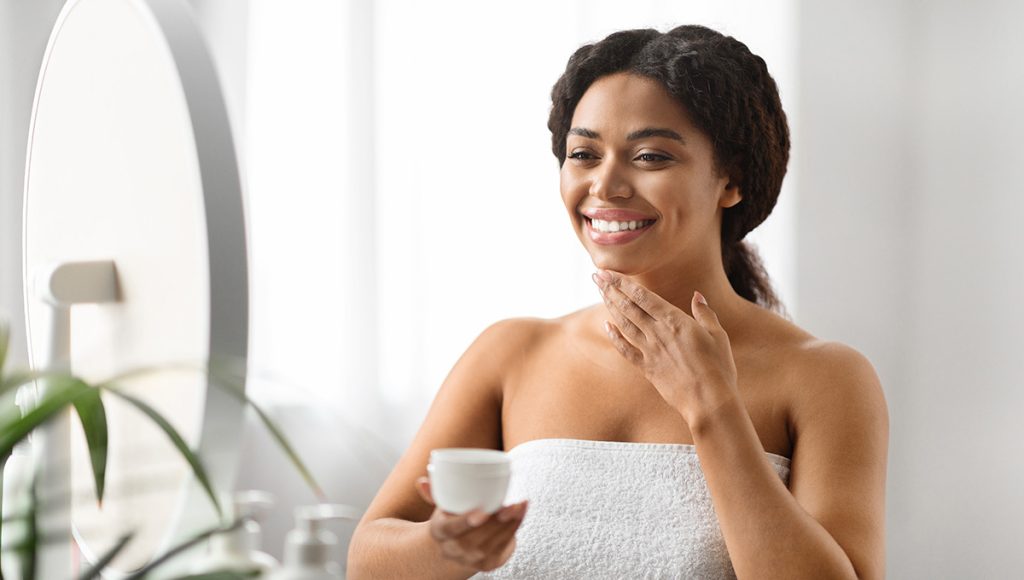
Finally, let’s talk strategy. You’ve got shea butter in hand—now what? Knowing when and how to apply it will make sure your glow doesn’t end up buried under a thick, greasy layer.
When to Apply Shea Butter in Your Skincare Order
Rule of thumb: heavy products go last. So if you’re using serums or actives like kojic… they go on first. Then you lock everything in with a nutty, sensual layer of shea goodness.
Here’s your order:
- Cleanse (like with Nasola Kojic Soap or African Black Wash)
- Tone (if desired)
- Apply treatment lotion or cream (like Kojic Acid Lotion)
- Seal with shea butter—massage generously
This makes your actives work harder… while keeping skin buffered and safe.
Storage and Shelf Life Tips
To get the most from shea:
- Store it in a cool, dry place out of direct light
- Don’t double dip—use a tiny spatula (dirty fingers = contamination!)
- Keep it tightly closed to prevent smell or texture change
- Use within 12 months of opening for top results
Trust me: fresher shea = better skin.
Conclusion
So—is shea butter non comedogenic? In most cases, yes. Pure, raw shea ranks low on the clog-o-meter and delivers serious skin benefits without the backlash.
From fading acne scars to calming dark spots, it’s a powerhouse… especially when teamed up with smart products.
My go-tos?
Let natural healing meet modern science.
Take one brave step: Upgrade your skincare with intention, nourishment, and products that do exactly what they claim.
Frequently Asked Questions
Yes, it is! Shea butter typically rates between 0 and 2 on the comedogenic scale, which makes it friendly for most acne-prone skin types. For best results, use raw or unrefined shea butter—these forms have fewer additives and are less likely to clog pores.
Definitely. Shea butter has vitamins A and E, which boost skin regeneration, reduce inflammation, and fade scars gently. You can maximize the results by pairing shea butter with Nasola Kojic Acid Lotion for more targeted brightening.
Yes it does. Thanks to its anti-inflammatory and antioxidant content, shea butter can naturally reduce hyperpigmentation over time. It works even better when combined with products like Nasola Lemon Turmeric Kojic Soap.
It can, depending on the fragrance source. Shea butters scented with essential oils are often safer and offer aromatherapy benefits. Avoid synthetic fragrances, and always do a patch test. Consider balancing it with Nasola Kojic Acid African Black Soap to reduce potential irritation.
Shea butter is best combined with:
– Nasola Kojic Acid Cream
– Nasola Kojic Acid Lotion
– Nasola Lemon Turmeric Kojic Soap
These amplify your spot treatment efforts and give quicker, more visible results.
Yes! Especially if it’s raw and unrefined. If your skin leans oily, use it lightly or only at night. For drier skin, daily use offers deep hydration with minimal risk.
With consistent use, most people see results in about 4–6 weeks. You’ll get even better outcomes when using kojic treatments like Nasola Kojic Acid Cream first, then sealing with shea.
Absolutely. Coconut oil ranks higher on the comedogenic scale and might clog pores. Shea butter is a safer, milder alternative with similar moisturizing properties.
After! Always apply active treatments like kojic acid first, then seal everything in with shea butter to lock in moisture and help absorption.
Raw shea butter is superior because it retains its vitamins and nutrients. Refined versions often have fillers or lose some of their skincare potency in processing.


